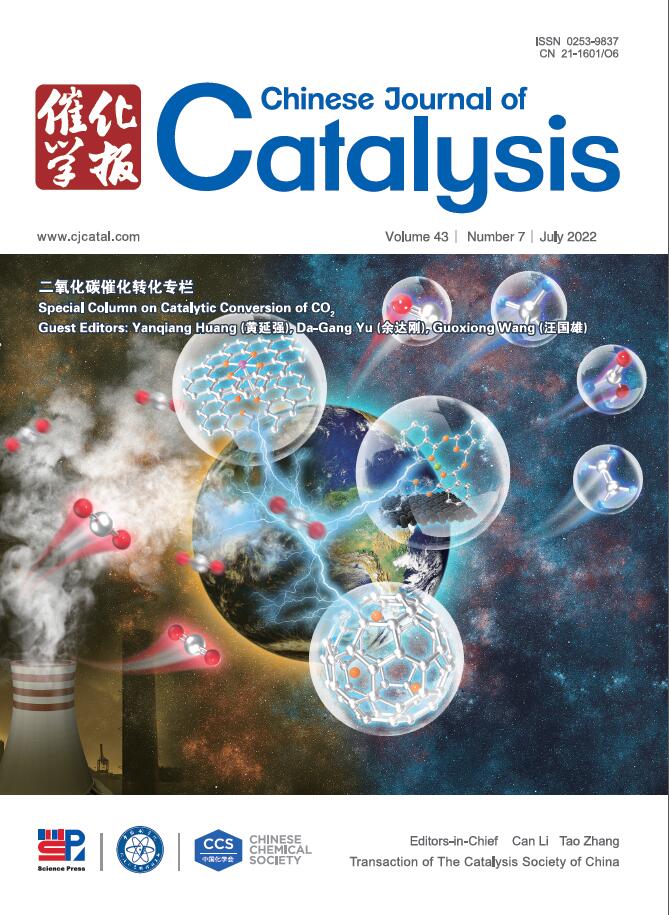Crystal facet engineering of Bi2O2CO3 nanosheets to enhance photocatalytic ozonation: Unraveling ozone adsorption and electron transfer mechanism
IF 15.7
1区 化学
Q1 CHEMISTRY, APPLIED
引用次数: 0
Abstract
Photocatalytic ozonation holds promise for advanced water purification, yet its development has been hindered by a limited understanding of ozone activation mechanisms and its related photogenerated electron transfer dynamics. Herein, we employed in-situ DRIFTS and Raman spectroscopy to elucidate the distinct adsorption and activation behaviors of ozone (O3) on the {001} and {110} crystal facets of Bi2O2CO3 (BOC) nanosheets. BOC-{001} demonstrates superior photocatalytic ozonation performance, with 85% phenol mineralization and excellent durability, significantly outperforming the 53% mineralization rate of BOC-{110}. This enhanced activity is attributed to non-dissociative ozone adsorption and favorable adsorption energy over {001} facet, which facilitate the one-electron O3 reduction pathway. Furthermore, crystal facet engineering strengthens the built-in electric field, promoting exciton dissociation and the generation of localized charge carriers. The synergistic effects of optimized electron availability and ozone adsorption significantly boost the production of reactive oxygen species. These findings provide a deeper understanding of the critical roles of O3 adsorption and electron transfer in radical generation, which could provide some guidance for the strategic development of highly effective photocatalytic ozonation catalysts.
增强光催化臭氧氧化作用的Bi2O2CO3纳米片晶面工程:揭示臭氧吸附和电子转移机制
光催化臭氧氧化有望实现高级水净化,但由于对臭氧激活机制及其相关的光生电子转移动力学的了解有限,阻碍了其发展。在此,我们利用原位漂移和拉曼光谱来阐明臭氧(O3)在Bi2O2CO3 (BOC)纳米片的{001}和{110}晶面上的独特吸附和活化行为。BOC-{001}表现出优异的光催化臭氧化性能,具有85%的苯酚矿化率和优异的耐久性,显著优于BOC-{110} 53%的矿化率。这种增强的活性归因于非解离臭氧吸附和良好的吸附能在{001}面,这有利于单电子O3还原途径。此外,晶面工程增强了内置电场,促进激子解离和局域载流子的产生。优化的电子可用性和臭氧吸附的协同效应显著促进了活性氧的产生。这些发现为O3吸附和电子转移在自由基生成中的关键作用提供了更深入的认识,为高效光催化臭氧化催化剂的战略开发提供了一定的指导。
本文章由计算机程序翻译,如有差异,请以英文原文为准。
求助全文
约1分钟内获得全文
求助全文
来源期刊

Chinese Journal of Catalysis
工程技术-工程:化工
CiteScore
25.80
自引率
10.30%
发文量
235
审稿时长
1.2 months
期刊介绍:
The journal covers a broad scope, encompassing new trends in catalysis for applications in energy production, environmental protection, and the preparation of materials, petroleum chemicals, and fine chemicals. It explores the scientific foundation for preparing and activating catalysts of commercial interest, emphasizing representative models.The focus includes spectroscopic methods for structural characterization, especially in situ techniques, as well as new theoretical methods with practical impact in catalysis and catalytic reactions.The journal delves into the relationship between homogeneous and heterogeneous catalysis and includes theoretical studies on the structure and reactivity of catalysts.Additionally, contributions on photocatalysis, biocatalysis, surface science, and catalysis-related chemical kinetics are welcomed.
 求助内容:
求助内容: 应助结果提醒方式:
应助结果提醒方式:


